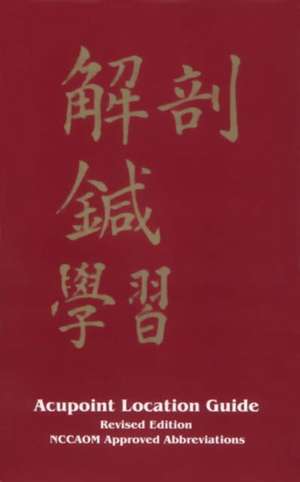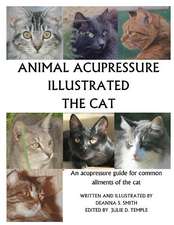Acupoint Location Complete Study Tool
en Limba Engleză Paperback
This revised edition endeavors to provide a unique and clear accessible directions for the exact locating of all acupuncture points
Short, uniformly formatted textual descriptions are given alongside tactile tips and corresponding anatomical maps. The text and illustrations are easy to use and conform to the guidelines listed below.
Efforts have been made to include tens of alternative locations of points which are mentioned in various classic sources. It does not presume to be a new approach, nor is it limited to one particular perspective.
The Acupoint Location Guide was first published in 2000, and was written as the book I envisioned as a student. Since then it has served thousands of students in their studies.
I hope you will find it valuable for you and enjoyable too.
Illustration Guidelines:
-The illustrations present all important anatomical details required for accurate location of the points.
-The different strata of the body: bones, muscles and tendons, skin, and arteries, are clearly delineated.
-The illustrations show the correct body posture for locating the points.
-All points are shown on the left side of the body, although they are found on both sides. Some illustrations show the point, untitled, also on the right side with additional anatomical aspects of the location.
-It is a good idea to use different colors to mark the various body structures in the illustrations, and to underline the corresponding text in the same color.
Text Guidelines:
-The names of the acupoints are given in Pinyin and in the NCCA abbreviations.
-The "Location" describes the point's horizontal and vertical position on the body, following the recommended body posture, if such is relevant.
-"Tips & References" provide the reader with additional information such as definitions from traditional sources, anatomically related structures and finger-tip search instructions.
-Most sources agree on the locations of points. "Alternative Locations" gives a variant location when such exists. Sources for alternative locations are given in the appendix, on p. 179.
-The text aims at accessibility to the general reader. All special terms ("cun" units, anatomical directions) are defined and illustrated in the Introduction. Names of anatomical structures are shown in the accompanying illustration.
-In order to keep the location definitions short and clear, simple terms have been substituted for the classical terminology. For example, a point located on the upper border of an organ is described as "superior to..." instead of "on the superior border of...." A point located directly above a site is described as "vertically superior to...," or, if a cun measure is given: "X cun superior to...."
Preț: 214.55 lei
Nou
41.06€ • 42.71$ • 33.90£
Disponibil
Livrare economică 25 martie-08 aprilie
Specificații
ISBN-10: 9652227358
Pagini: 194
Dimensiuni: 156 x 234 x 10 mm
Greutate: 0.28 kg
Ediția:Revised
Editura: Alon Lotan



















